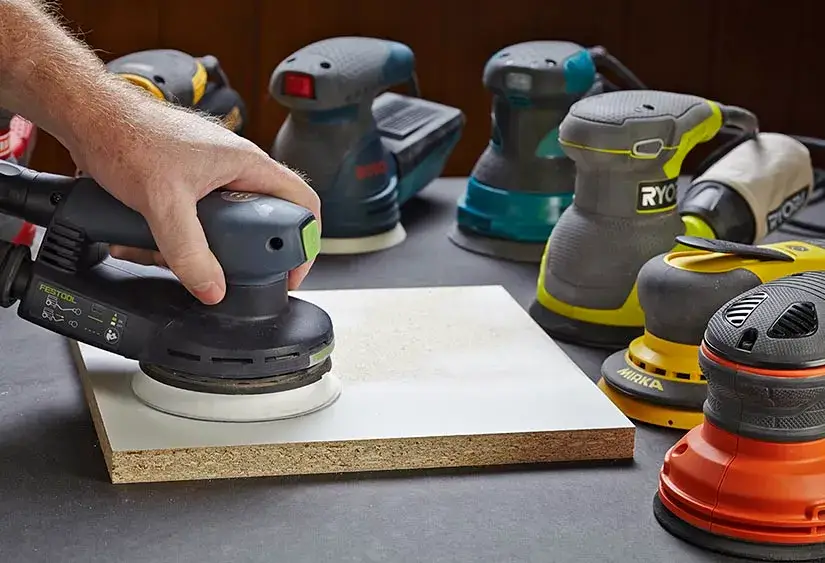Sanding is a common task in woodworking, carpentry, and DIY projects. It involves smoothing and shaping the surface of wood, metal, plastic, or other materials using abrasive tools. Sanding can improve the appearance, texture, and durability of the final product. However, sanding can also be tedious, time-consuming, and messy if done manually or with the wrong tools. That’s why choosing the right type of sander is crucial for achieving the best results.
The most useful type of sander depends on the size, shape, and condition of the material you are working on, as well as the desired finish and level of detail. There is no one-size-fits-all solution for sanding, as different types of sanders have different strengths and weaknesses. In this article, we will compare and contrast the main types of sanders available on the market, and help you decide which one is best suited for your needs.
Belt Sander
A belt sander is a powerful and aggressive tool that uses a continuous loop of sandpaper (called a belt) to remove large amounts of material quickly. It is ideal for sanding large, flat, and rough surfaces, such as floors, doors, tabletops, and decks. A belt sander can also be used to level uneven boards, remove old paint or varnish, and shape edges and curves.
However, a belt sander is not very precise or delicate, and can easily damage the surface if not handled properly. It can also create deep scratches and swirl marks that are hard to remove with finer sandpaper. Therefore, a belt sander is usually used for the initial stages of sanding, and followed by a finer tool for the finishing touches.
Orbital Sander
An orbital sander is a versatile and user-friendly tool that uses a circular or rectangular pad of sandpaper (called a disc or a sheet) to move in small orbits. It is ideal for sanding medium-sized, flat, and smooth surfaces, such as furniture, cabinets, walls, and ceilings. An orbital sander can also be used to remove minor imperfections, smooth out edges and corners, and create a uniform finish.
However, an orbital sander is not very efficient or effective for sanding large, rough, or curved surfaces, as it can take a long time and produce uneven results. It can also leave circular or rectangular marks on the surface if not moved constantly or randomly. Therefore, an orbital sander is usually used for the intermediate or final stages of sanding, and preceded by a coarser tool for the rough work.
Random Orbital Sander
A random orbital sander is a hybrid and advanced tool that combines the features of a belt sander and an orbital sander. It uses a round pad of sandpaper (called a disc) to move in both orbits and rotations. It is ideal for sanding any size, shape, and condition of surface, as it can remove material quickly and smoothly, without leaving any noticeable marks or patterns. A random orbital sander can also be used to create different finishes, from coarse to fine, by changing the grit size of the sandpaper.
However, a random orbital sander is not very cheap or simple, and can require more skill and care to operate. It can also generate more dust and noise than other types of sanders, and may need more frequent maintenance and replacement of parts. Therefore, a random orbital sander is usually used for the most demanding and professional sanding jobs, and accompanied by proper safety and cleaning measures.
Conclusion
As you can see, there is no definitive answer to the question of what is the most useful type of sander, as it depends on various factors and preferences. However, based on our comparison, we can conclude that:
- A belt sander is the most useful type of sander for sanding large, flat, and rough surfaces, such as floors, doors, tabletops, and decks.
- An orbital sander is the most useful type of sander for sanding medium-sized, flat, and smooth surfaces, such as furniture, cabinets, walls, and ceilings.
- A random orbital sander is the most useful type of sander for sanding any size, shape, and condition of surface, as it can remove material quickly and smoothly, without leaving any noticeable marks or patterns.
We hope this article has helped you understand the main types of sanders and their pros and cons, and make an informed decision for your next sanding project. Happy sanding!

